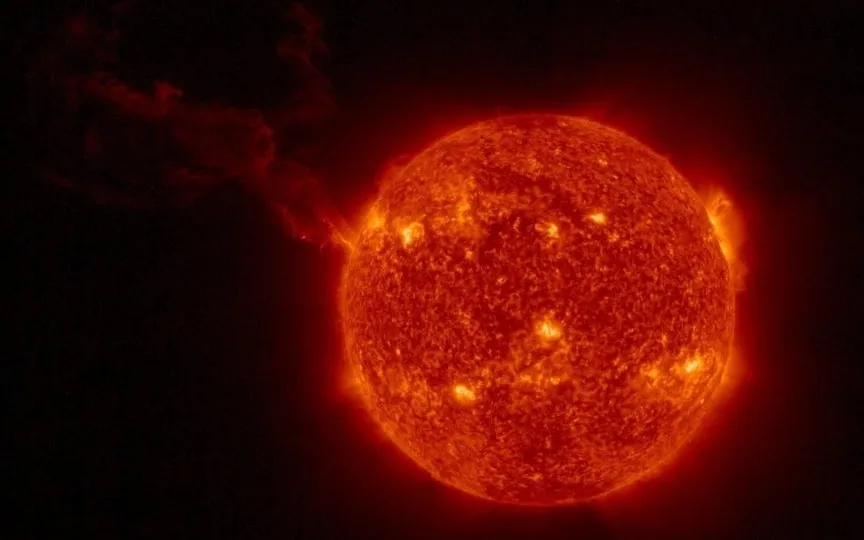Sun Erupts with M-Class Solar Flare: Blackouts on Earth, Solar Storm Looming!
Yesterday, a massive sunspot measuring 200,000 kilometers and containing up to 12 dark cores was observed on the Sun. According to the NASA Solar Dynamic Observatory (SDO), there was a significant risk of it erupting, which indeed occurred just an hour ago. The eruption resulted in an M-class solar flare, emitting intense ultraviolet radiation that caused a temporary disruption in short-wave radio communication on Earth. Although NASA has not yet confirmed the occurrence of any coronal mass ejection (CME) directed towards Earth, this information is expected to be disclosed within a few hours.
According to a post by Space Weather Live’s official account on X, the explosion occurred in a newly discovered and rapidly expanding sunspot that is already geopotent. The message revealed that it was M1.48 class flares. The eruption occurred in the northwestern part of the sunspot.
A solar storm is possible during a solar flare
After the flare, there was also a shortwave radio blackout on Earth. The blackout was active in Australia, New Zealand and eastern China. The power outage continued for a short time and may have caused communication disruptions for drone pilots, mariners, pilots and emergency personnel.
It has not been confirmed that a solar storm will definitely hit Earth. It is possible that the CME was not released, or even if it was, it might be a non-Earth-driven CME. But in the scenario that a solar storm does indeed ignite on Earth, it’s likely to be minor. These are considered quite minor. Such solar storms may not be strong enough to affect mobile networks or damage satellites, but they can still cause more radio blackouts and disrupt GPS signals.
The role of the NASA Solar Dynamics Observatory
The NASA Solar Dynamics Observatory (SDO) houses a full suite of instruments for observing the Sun, and has done so since 2010. It uses three very important instruments to collect data on various solar activities. They include the Helioseismic and Magnetic Imager (HMI), which measures high-resolution longitudinal and vector magnetic fields across the entire visible solar disk, the Extreme Ultraviolet Variability Experiment (EVE), which measures the sun’s extreme ultraviolet radiation, and the Atmospheric Imaging Assembly. AIA), which provides continuous full-disk observations of the solar chromosphere and corona in seven extreme ultraviolet (EUV) channels.




